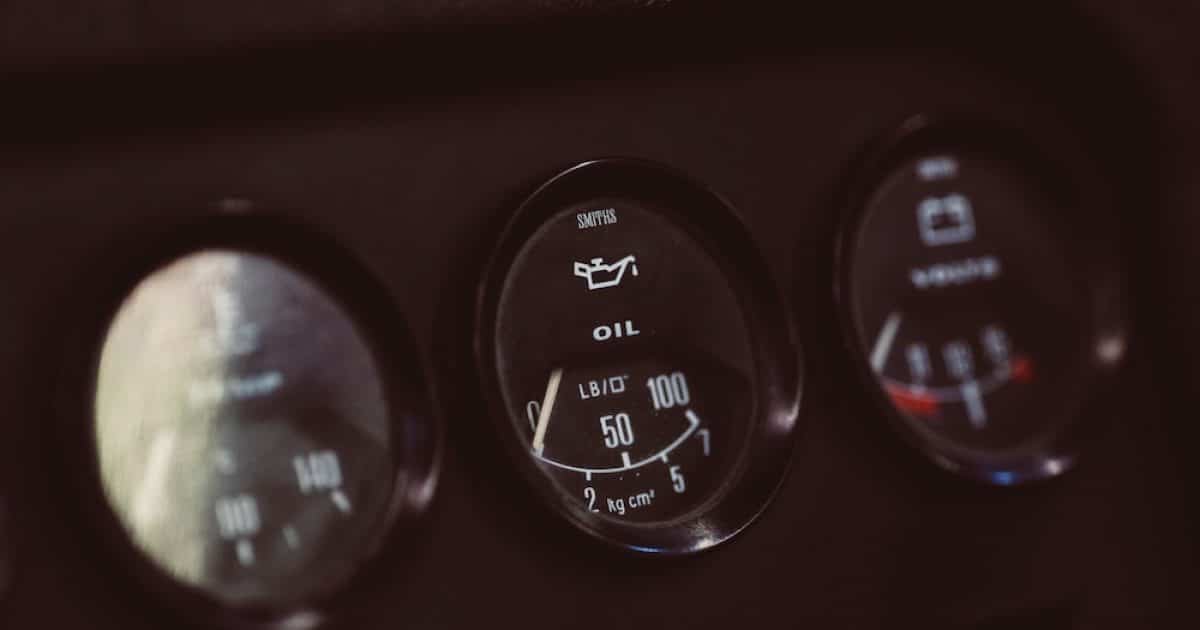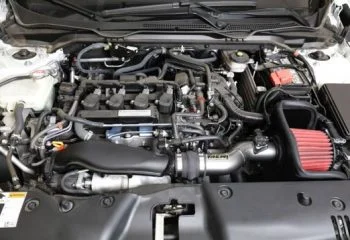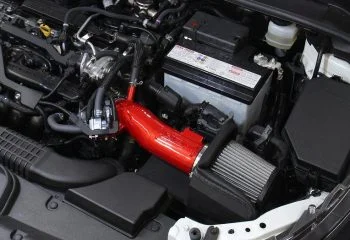If your car has low oil pressure when idle, don’t freak out, this is usually an indication that your engine is running low on oil.
When the engine is idling at a low speed, the internal components are not under much strain, so the oil pressure doesn’t need to be very high in order to keep everything lubricated and running smoothly.
However, as more power is applied to the engine via acceleration, the intensity of activity increases.
This means that there is a greater demand for oil pressure, which will cause the pressure reading to appear as “normal”.
So if you’re experiencing low oil pressure at idle only, it’s likely that your engine simply needs a top-up of oil.
However, there may be other problems that cause low oil pressure at idle.
In this blog post, we’ll go over the most common causes of low oil pressure when idle, and we’ll also give you some tips on how to fix it. So keep reading to learn more!
What's in this post?
What is the normal oil pressure at idle?
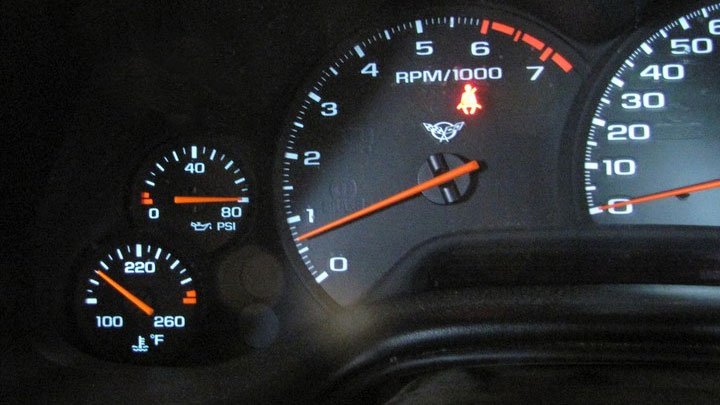
In order to maintain the proper function of your vehicle, it is important to keep an eye on your oil pressure gauge.
At idle, the normal oil pressure should be somewhere between 20 and 65 PSI. If it falls below 20 PSI, that means that the oil pressure is at a lower level than normal and you should take action to correct the problem.
There are a number of reasons why your oil pressure may be low, including leaks or an oil pump failure. Regardless of the cause, it is important to address the problem as soon as possible in order to prevent damage to your engine.
What causes low oil pressure when idle?
There are a number of possible causes of low oil pressure when the engine is idling. Let’s take a look at them one by one.
Low Oil Level
One possible cause of low oil pressure at idle is running the engine with too little oil.
If this happens, not enough oil will be available to properly lubricate the moving parts in the engine, and it may not be able to maintain high pressures at idle.
To check your oil level, make sure your engine is cold and then remove the dipstick.
Wipe off any residue on the end of the stick, reinsert it fully into its hole, pull it back out again, and check where the marker on the dipstick lines up with the scale marked on its body.
If you need more oil, add as much as necessary through your vehicle’s filler cap until it shows that you have a correct level.
Wrong oil
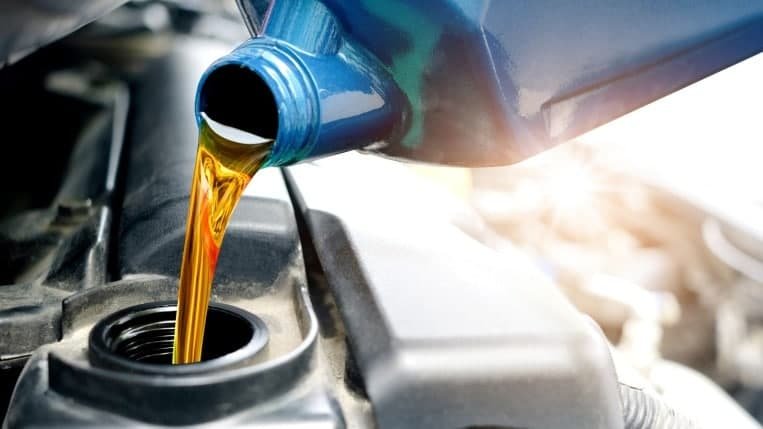
Another possible cause of low oil pressure when the engine is idling is using the wrong viscosity of oil. Modern engines use a variety of oils to ensure they’re weather-proof.
In cold weather, the multi grade oil flows thinly and becomes thicker as temperatures rise. This prevents engine wear from occurring too quickly during different seasons.
When it comes to choosing an oil for your car, there are many factors to consider. One of the most important considerations is viscosity: the thicker the oil, the more resistance it has to flow under pressure.
Determining which type of oil is best for your car can often be a difficult decision. On the one hand, oils of higher viscosity, like 20-w-50 and straight 30W, 40W, may offer better protection against oil pressure loss when driving in hot weather.
However, these heavier oils may cause problems with cold weather starting and lubrication due to their thicker consistency.
On the other hand, oils of light viscosity, like straight 10W or 5W-20, may have easier cold-weather starting and lubrication properties due to their thinner consistency.
However, these lighter oils are more likely to result in decreased oil pressure levels in warmer weather driving conditions.
Ultimately, many manufacturers now recommend using a 5W-30 oil year-round to provide adequate protection no matter what the weather conditions are like.
This is because 5W-30 offers the best mix of good temperature performance and adequate lubrication in both hot and cold temperatures.
So if you’re looking for an oil that will offer superior performance regardless of whether you’re driving in summer or winter conditions, then 5W-30 is probably your best choice.
And with this versatile viscosity rating, it is sure to be an excellent choice for any car.
Remember to check your vehicle’s manual or contact your mechanic to determine what type of oil viscosity is best suited to your driving conditions and needs.
Faulty Oil Pump
If the oil pump isn’t functioning properly, it may not be able to generate enough pressure to keep the oil flowing through the engine at idle.
This can be caused by a number of things, including a loss of power to the pump, a blockage in the pump, or wear and tear on the pump itself.
When diagnosing problems with an oil pump, the first thing to consider is whether the pump is receiving the correct amount of oil.
An oil pressure gauge can be used to measure the amount of pressure coming from the pump, and a digital sensor can also provide readings.
If pressure levels are above normal or below normal, it could indicate that there is an issue with either the oil lines or the pump itself.
Other common symptoms to look out for include abnormal noises such as grinding or clicking as well as changes in vibration levels.
To properly diagnose a faulty oil pump, it’s essential to work with an experienced mechanic who can draw on years of expertise in determining what might be causing the problem.
By doing so, you can rest assured that your vehicle will get back up and running as quickly and safely as possible.
If you suspect this is the case, have your mechanic check your oil pump to see if it needs to be replaced or repaired.
Worn Engine Parts
Another possible cause of low oil pressure at idle is worn out engine parts.
Over time, parts like bearings and pistons can wear down from use and no longer fit as snugly together as they did when they were new.
This can reduce the level of friction between moving parts and lead to reduced oil pressure.
In order to resolve this issue, you may need to have your mechanic inspect your engine for signs of wear and replace or repair any worn out parts as necessary.
Clogged Oil Filter
A clogged oil filter can also lead to low oil pressure when the engine is idling.
This happens because the filter may not be allowing enough oil to pass through it and reach all parts of the engine for lubrication.
If the filter becomes clogged or damaged, this can result in a significant decline in oil pressure throughout your engine.
In fact, many modern oil filters actually contain built-in pressure relief valves that help maintain optimal levels of oil pressure.
These valves are sensitive and can be easily damaged if they are not treated properly.
Therefore, it is important to check both the integrity of your oil filter as well as any signs of engine sludge.
Over time, engine sludge can form due to improperly changing your oil, resulting in decreased lubrication and reduced oil flow through your engine.
To resolve this issue, make sure that you change your oil and replace the filter at regular intervals as recommended by your vehicle’s manufacturer.
Poor car maintenance
Another reason your car may have low oil pressure at idle is due to neglected car maintenance.
If you aren’t properly following the recommended oil change interval for your car, this will lead to a dirty engine.
Over time, impurities can build up inside the engine, causing it to become clogged.
This can then put strain on the engine, leading to low oil pressure. Therefore, it’s important to follow the recommended oil change schedule for your car in order to prevent this issue.
Faulty pressure gauge
If your car’s oil pressure gauge is broken or not working properly, it may give you a false reading. This could lead you to believe that your car has low oil pressure when it doesn’t.
When it comes to diagnosing faulty pressure gauges, there are a number of key steps that should be followed in order to ensure an accurate diagnosis.
First, it is important to determine whether the faulty gauge is caused by mechanical problems or electronic malfunctions. This can often be determined based on the way in which the gauge is reading information and the specific symptoms being exhibited.
For example, if the gauge consistently registers higher or lower than actual pressure levels, this may indicate mechanical error.
On the other hand, if erratic fluctuations or unusual spikes are observed on a periodic basis, this may suggest an underlying electrical issue.
Other potential factors that may contribute to a faulty pressure gauge can include issues with air flow or improper calibration settings.
However, correct diagnosis and repair will depend on each individual situation and requires careful monitoring and evaluation of all relevant parameters.
To check if your gauge is working properly, consult your car’s manual or take it to a mechanic to have it checked.
How to fix low oil pressure at idle?
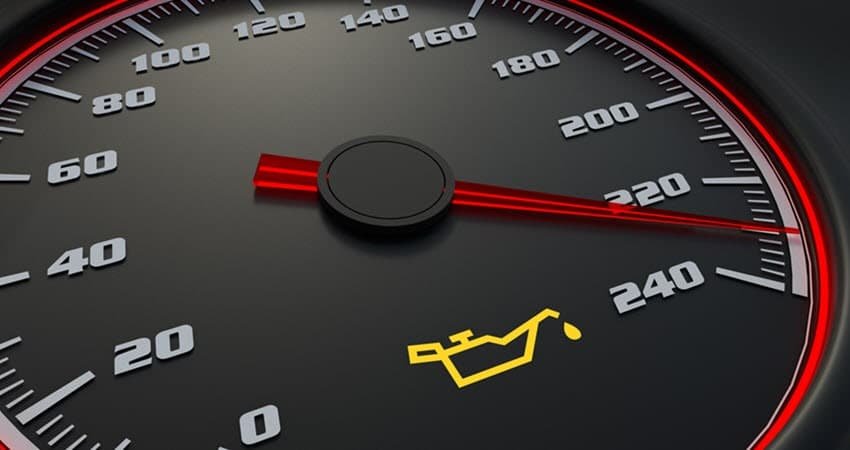
If you find that your car does have low oil pressure at idle, there are a few steps that you can take in order to fix the problem.
First, it is important to check the oil level and make sure that it is full. If it is not, add more oil until it reaches the proper level.
Next, check the oil filter and replace it if necessary.
If the filter is clogged or damaged, this can lead to low oil pressure. Therefore, replacing it with a new one should help to resolve the issue.
Another potential cause of low oil pressure at idle is poor car maintenance. If you haven’t been following the recommended schedule for changing your oil, this can lead to a build-up of impurities in the engine, which can then cause low oil pressure.
To fix this problem, simply change your oil and replace the filter at the recommended interval. Finally, if you suspect that the pressure gauge is faulty, take it to a mechanic to have it checked.
By following these steps, you should be able to resolve the issue of low oil pressure at idle.
How much does it cost to fix low oil pressure when idle?

When it comes to repairing an engine oil pressure issue, there are a number of factors that will affect the overall cost.
On average, a replacement oil pressure sensor costs somewhere from $120 to $160. The cost of labor typically amounts to around 73 cents to $1 per hour, while parts usually cost between 45 and 70 cents per hour. (See Will My Car Run Without Oil Pressure Sensor?)
In addition, the type of car will have an impact on the overall cost; for example, certain luxury models may require specialized parts and tools in order to do the repair, which can increase costs significantly.
However, with the right knowledge and resources, fixing an engine oil pressure problem can be a relatively straightforward process.
So long as you know what to look for and what steps to take, you can get your car back on the road in no time!
How Oil Pressure Works
The oil pump is a vital component of any internal combustion engine. Its primary purpose is to circulate oil throughout the engine to keep all the moving parts lubricated.
It also helps to remove any built-up heat from the engine and keeps the engine running smoothly.
The oil pump is typically located at the bottom of the engine block and is driven by either the crankshaft or camshaft. It consists of housing, gears, and bearings.
The housing contains an inlet where oil enters and an outlet where it exits.
The gears are responsible for moving the oil from the inlet to the outlet and are typically made of either metal or plastic.
The bearings help to reduce friction between the gears and the housing. Together, these components work to keep your engine running efficiently.
FAQs about low oil pressure when idle
Will low oil pressure cause vehicles not to start?
Yes. Low oil pressure can cause engine damage or even failure if left untreated, which in turn may prevent your vehicle from starting. Here is some way to tell if the engine is damaged from no oil.
How long can an engine last with low oil pressure?
You should not drive for more than a few miles with the low oil pressure light on. Doing so could cause serious damage to your engine.
How long can an engine last with low oil pressure?
Without a steady supply of oil, an engine cannot function properly, and will eventually fail.
In fact, most modern engines are capable only of running for less than 30 minutes without oil before they cease operating entirely.
While this might seem like a relatively small amount of time, it can actually be quite problematic in some situations, such as during an intensive driving course or long road trip.
What is the purpose of an oil pressure gauge?
An oil pressure gauge is a device that is used to measure the pressure of the engine oil.
It is typically located on the dashboard of a vehicle and is usually accompanied by a warning light.
The gauge gives drivers an indication of how well the engine is lubricated and can be used to detect any potential problems.
Why do I lose oil pressure when I stop?
When you brake or come to a stop, it is normal for the oil pressure to drop. This is because the engine doesn’t need as much oil when it isn’t moving.
However, if the oil pressure drops to zero or close to zero, there may be a problem.
This could be caused by low oil levels or a loose oil pickup tube. If you think there may be a problem, it’s best to take your car to a mechanic to have it checked out.
Will too much oil cause low oil pressure?
When you brake or come to a stop, it is normal for the oil pressure to drop. This is because the engine doesn’t need as much oil when it isn’t moving.
However, if the oil pressure drops to zero or close to zero, there may be a problem.
This could be caused by low oil levels or a loose oil pickup tube. If you think there may be a problem, it’s best to take your car to a mechanic to have it checked out.
Can you drive a car with low oil pressure?
You should not drive for more than a few miles with the low oil pressure light on. Doing so could cause serious damage to your engine.
If you must drive, do so slowly and avoid any sudden stops or sharp turns. It’s also a good idea to keep an eye on the temperature gauge to make sure the engine isn’t overheating.
If possible, it’s best to have the car towed to a nearby service station or mechanic.
Why is my oil light still on after oil change?
If you’re noticing that your engine oil light is on even after changing the fluids in it, there could be an issue with either a faulty sensor or dirty particles getting inside. The pump can fail due to dirt accumulation which triggers this warning message as well! You can try to reset the oil change light if you believe your car’s components are still good.
Can synthetic oil cause low oil pressure?
It could be due to a more synthetic or detergent type of oil, which has lessening effects on how much pressure gets within your engine block when it is running smoothly without any problems at all. But if there are issues such as low levels in the crankcase then they’ll show up soon enough!
Is it OK if the oil level is a little high?
If the oil level is a little above the full mark, that is just fine. Overfilling the oil by half a quart or more is not allowed and will cause problems with your car. If you see foam on the dipstick, have it drained to avoid any issues later down road!
Can a clogged catalytic converter cause low oil pressure?
Catalytic converters can reduce the level of oil in an engine, but there will be some burning or leaking.
Do spark plugs have anything with oil pressure?
One of the main causes of a misfire can be oil in the spark plug, and this usually happens as a result of an engine oil leak. When there is a decrease in oil pressure, it can lead to low oil levels in the engine.
This can then trigger an improper combustion event, which ultimately results in a misfire.
Therefore, it is important to identify and fix any existing engine oil leaks, as well as to monitor your car’s oil levels regularly to prevent misfires from occurring.
Can low oil cause rough idle?
Yes, low oil levels in your engine can cause a rough or sputtering idle. This is typically caused by lack of lubrication for the moving parts inside the engine.
If you see that your oil level is low, make sure to add more as soon as possible to avoid damaging your engine. If you continue to experience a rough idle, it is best to consult a mechanic for further diagnosis and repair.
Can a loose serpentine belt cause low oil pressure?
The timing belt drives the camshaft gears, and if it’s off by just a little bit then pieces may break off. These sharp edges can get stuck in between lobes of your oil pan on top which will cause oil pressure drop!
Can too much oil cause low oil pressure?
Low oil pressure or leaking from your car’s engine may be symptoms of too much grease. The overflow will whip into a foam and cause damage to other parts in the process, which could lead you on an expensive repair journey if left unchecked!
Conclusion
I hope this article was able to provide you with some valuable information on the causes and symptoms of low oil pressure when idle. If you are experiencing any of these issues, it is important to take your vehicle in for a diagnostic as soon as possible. Thanks for reading!

